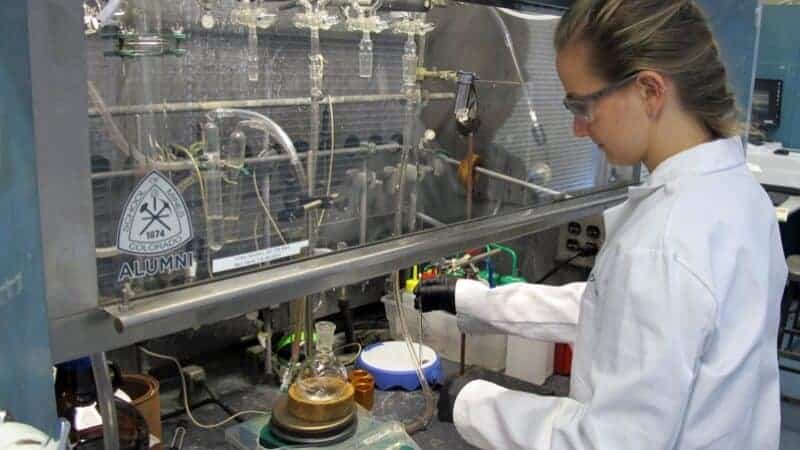Researchers in the UO lab of chemist Michael Pluth are part of a global battle against oxidative stress in the human body. It happens as we age and when we eat too much, smoke and drink alcohol. Affected cells release reactive oxygen that damage cells.
Heart disease, cancer, Alzheimer’s, Parkinson’s and more than 70 other diseases involve damages from oxidative stress.
In the last 20 years, scientists have found that hydrogen sulfide — the same colorless gas known for its dangerous toxicity and smell like rotten eggs — acts as a vital signaling molecule that helps regulate blood pressure and inflammation responses.
Pluth, a professor in the Department of Chemistry and Biochemisty, has been looking at the basic interactions that occur when hydrogen sulfide collides with biological targets. Under an early career award from the National Institutes of Health, Pluth and colleagues developed a sensitive probe to detect hydrogen sulfide in both biological samples and contaminated water.
Since then, he has focused on biological aspects under a National Science Foundation career grant, a Sloan Foundation fellowship and a Camille Dreyfus Teacher-Scholar award. The payoff may be emerging from back-to-back projects published this year.
While promising, the research is at a cellular level in the lab and remains far from medical application.
“We have discovered that small organic molecules can be engineered to release a molecule called carbonyl sulfide, which is the most prevalent sulfur-containing molecule in the atmosphere, but, more importantly, converts rapidly to hydrogen sulfide under biological conditions,” Pluth said. “We developed and demonstrated a new mechanism to release small molecules that provide therapeutic hydrogen sulfide.”
In short, his lab’s designer molecules carry carbonyl sulfide. Pluth’s doctoral student Andrea Steiger led the effort to create them. Her work appeared in a paper in the Journal of the American Chemical Society in June.
Postdoctoral researcher Yu Zhao next adapted Steiger’s molecules so that they remain stable and nontoxic in a cellular environment until oxidative stress triggers them to release the carbonyl sulfide, which is quickly converted to hydrogen sulfide by enzymes in the body. Zhao’s paper appeared in the international journal Angewandte Chemie in November.
“We are synthetic chemists,” said Pluth, a co-author on both papers. “We make molecules with the goal of developing new research tools or therapeutic tools. As for treating a disease, we aren’t there yet, but these cell-based studies suggest that those types of protective effects might be possible.”
Currently used hydrogen sulfide strategies used in medicine generally involve slow-release molecules that donate hydrogen sulfide passively.
Taken together, these two proof-of-concept studies show that molecules can be designed with structures that break down only when triggered by a particular chemical reaction, Zhao said. “With this, you might be able to pick molecular events that are associated with conditions in which hydrogen sulfide might be beneficial, and then develop donor molecules able to deliver hydrogen sulfide under those conditions,” he said.
“The novelty for us was being able to use carbonyl sulfide as a source of hydrogen sulfide donation,” Steiger said. “This was a first. It opened up a whole new class of donor molecules.”
Carrying the research forward to medical reality takes time when promising findings emerge from basic research, Pluth said. “Having researchers nearby who are focused on translating basic science discoveries into market applications would facilitate further expansion of this work,” he said.
Doing just that is a goal of the Phil and Penny Knight Campus for Accelerating Scientific Impact to be built at the UO. The $1 billion initiative to fast-track scientific discoveries into innovations that improve quality of life for people in Oregon, the nation and the world began with the announcement in October of a $500 million gift from the Knights.

